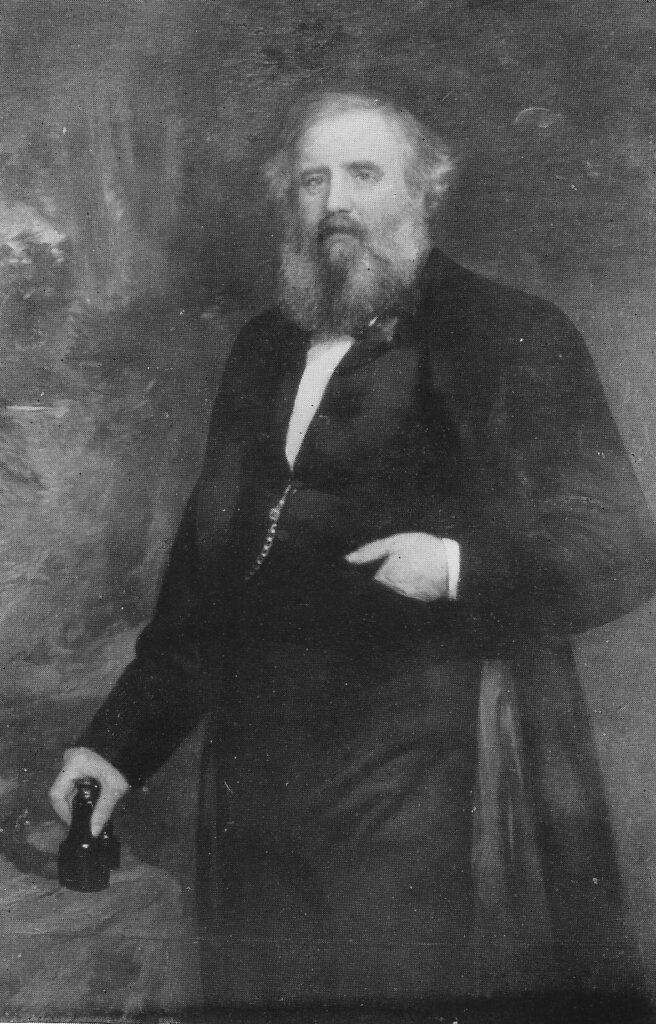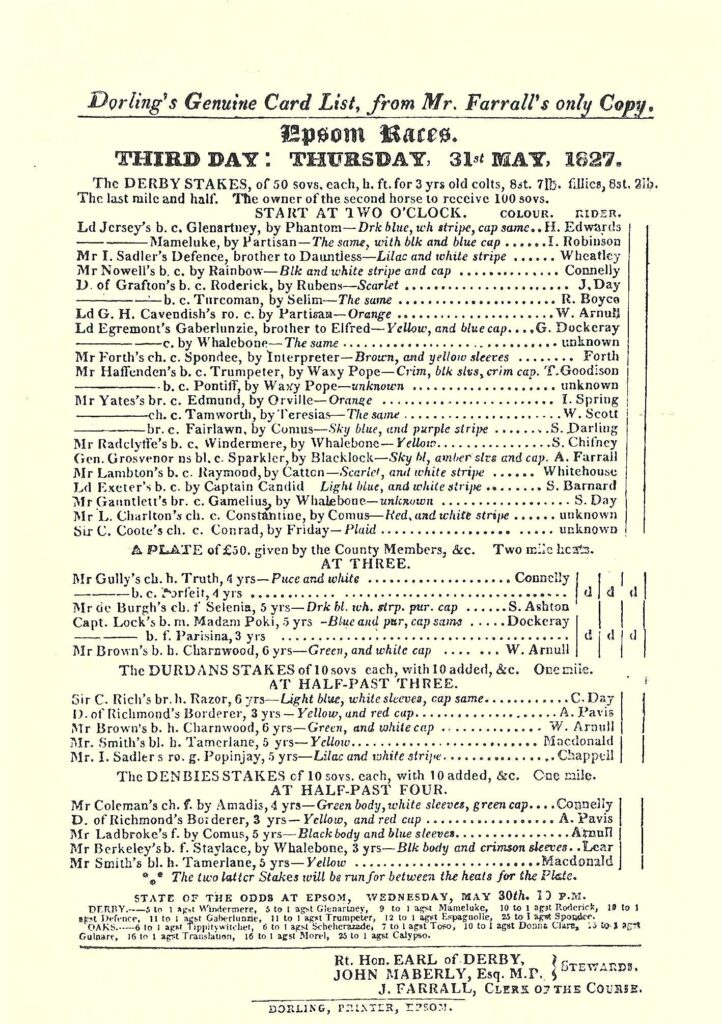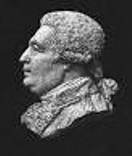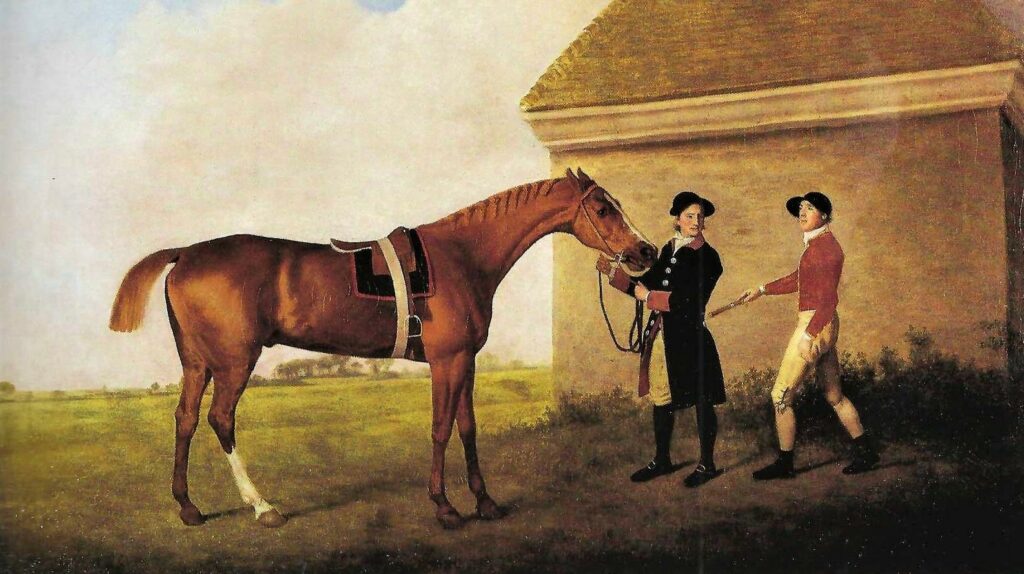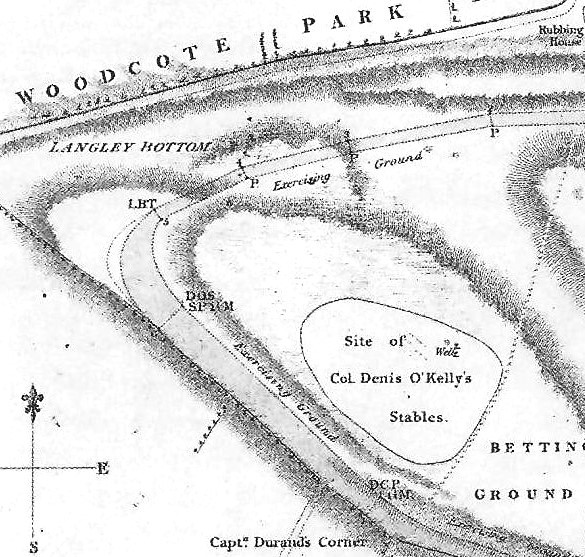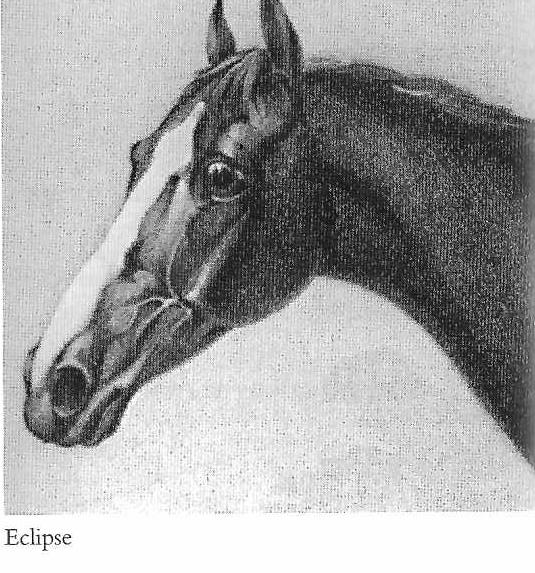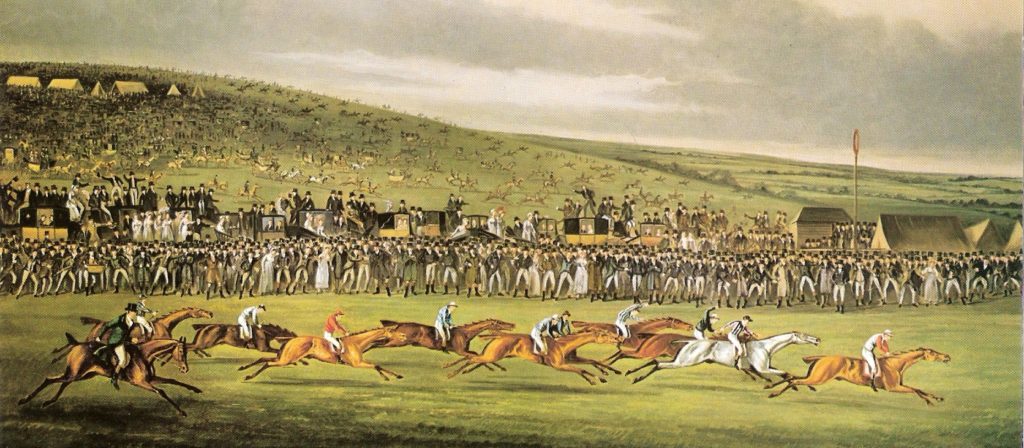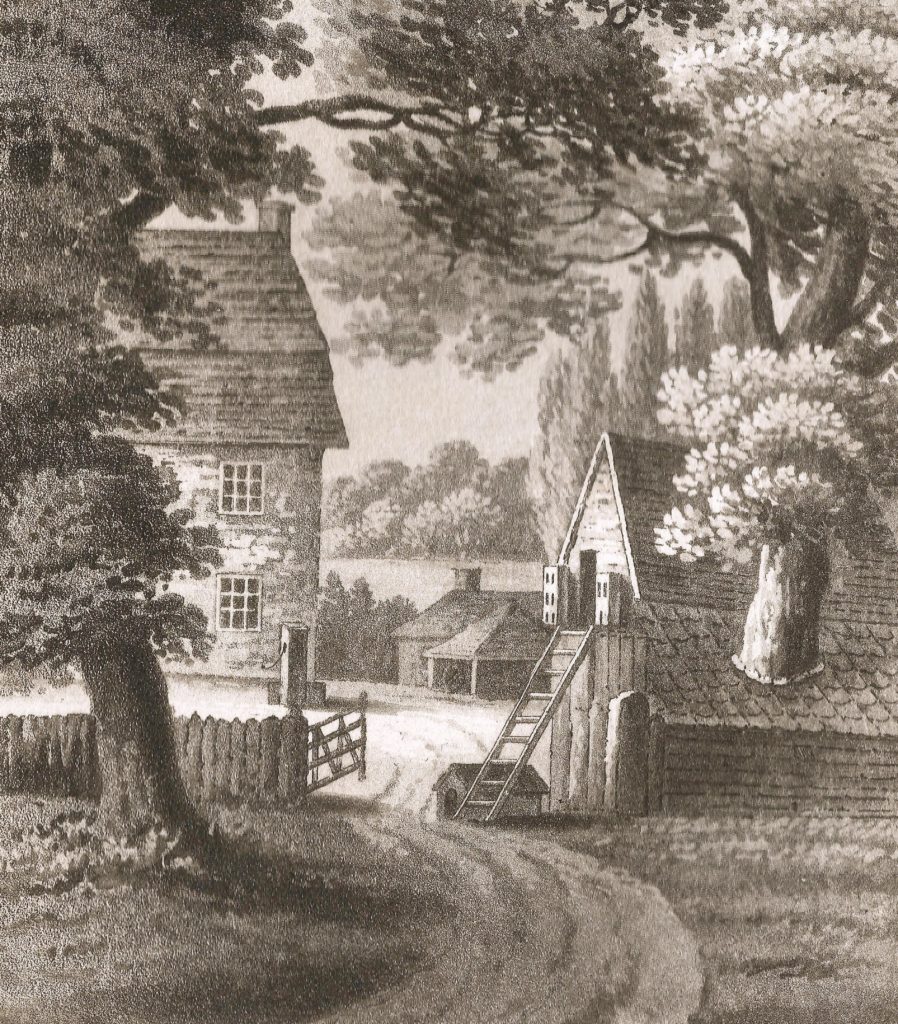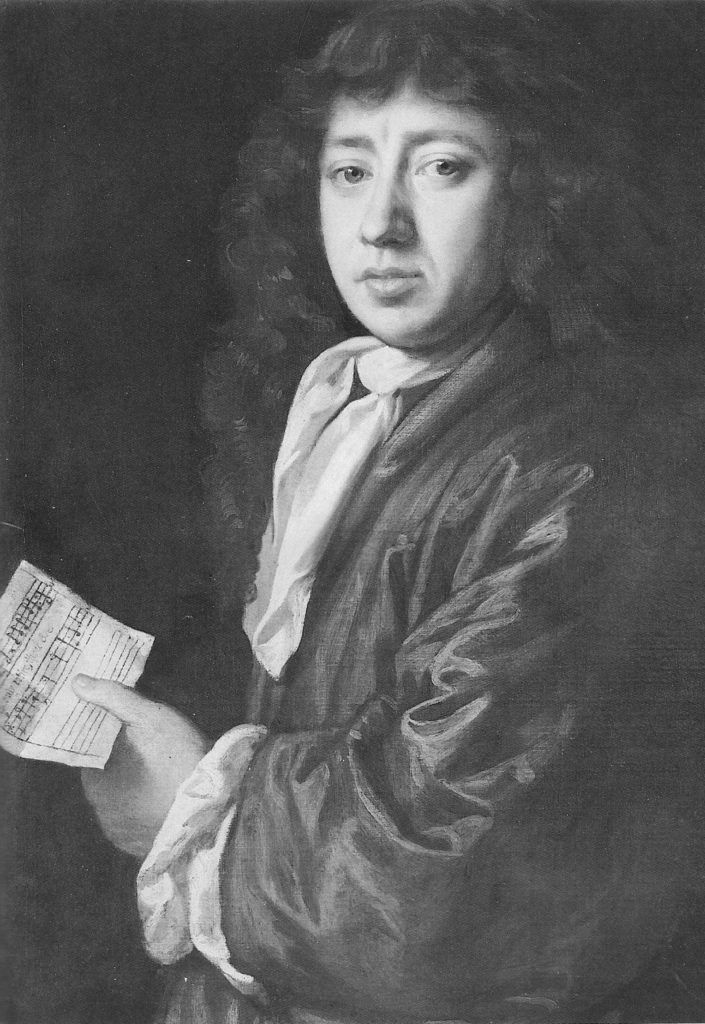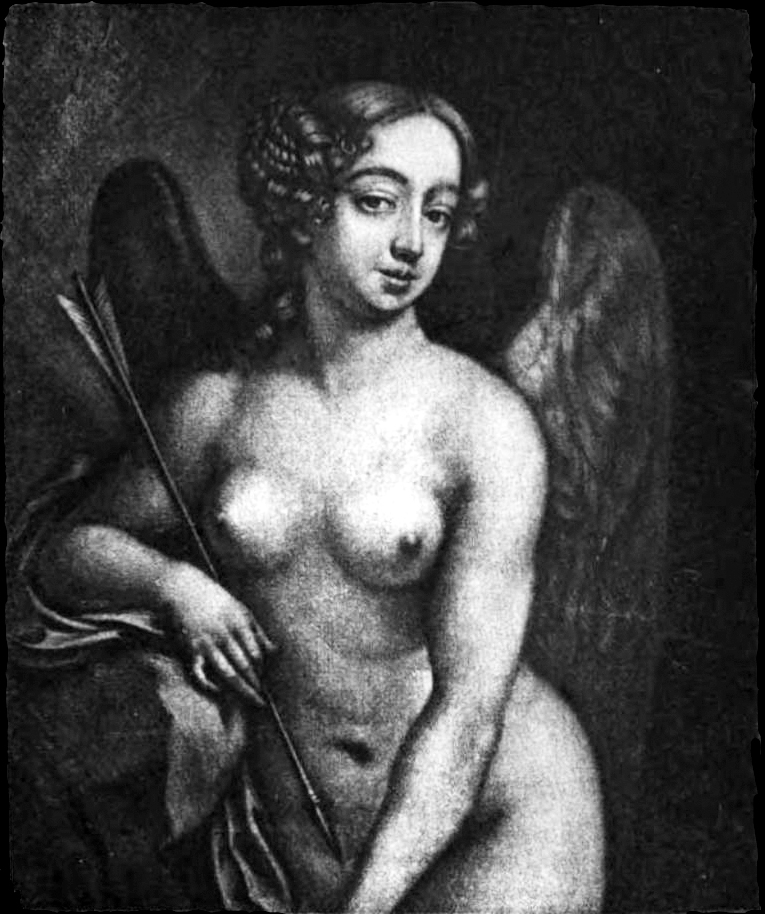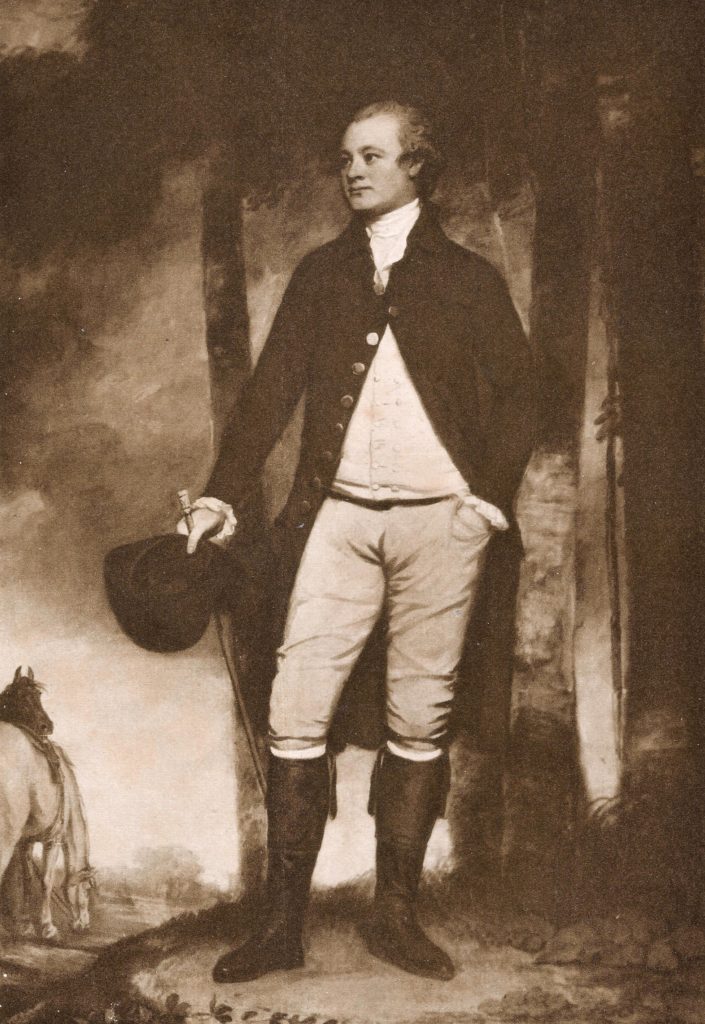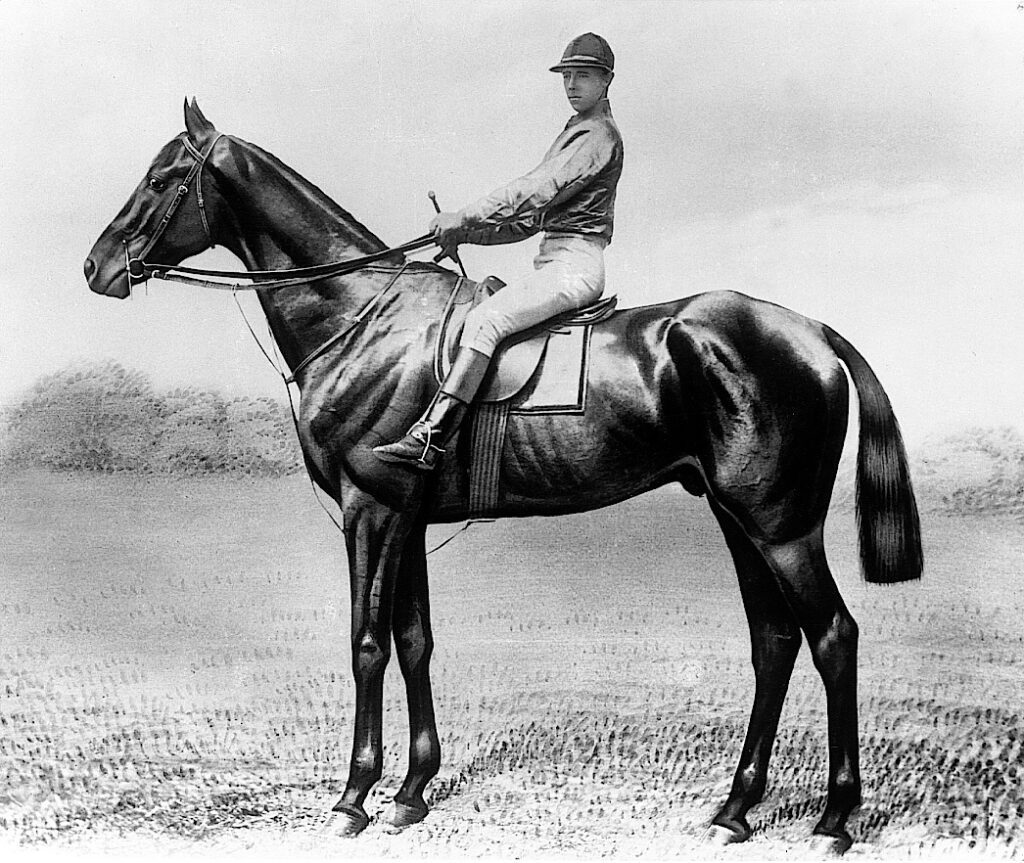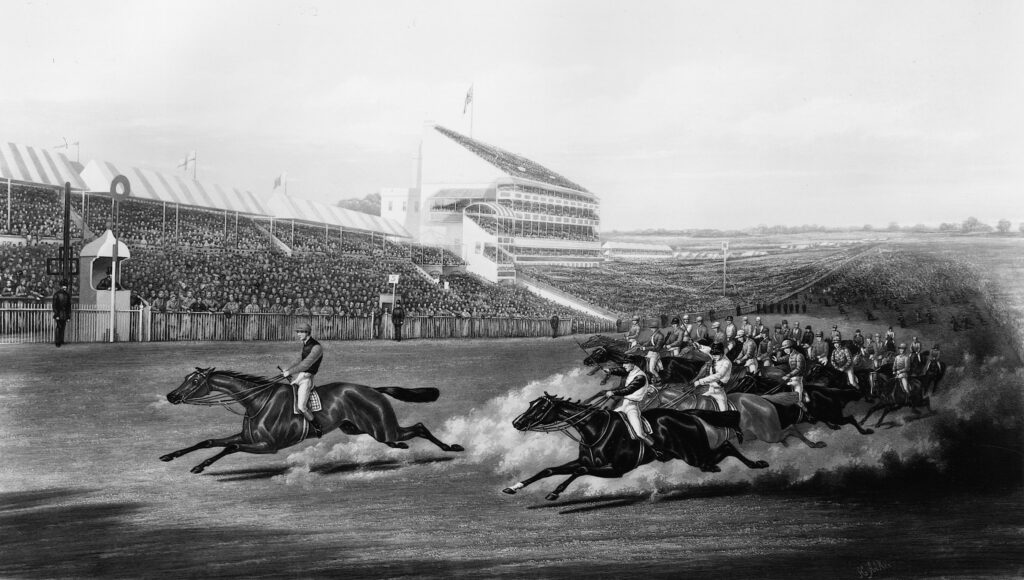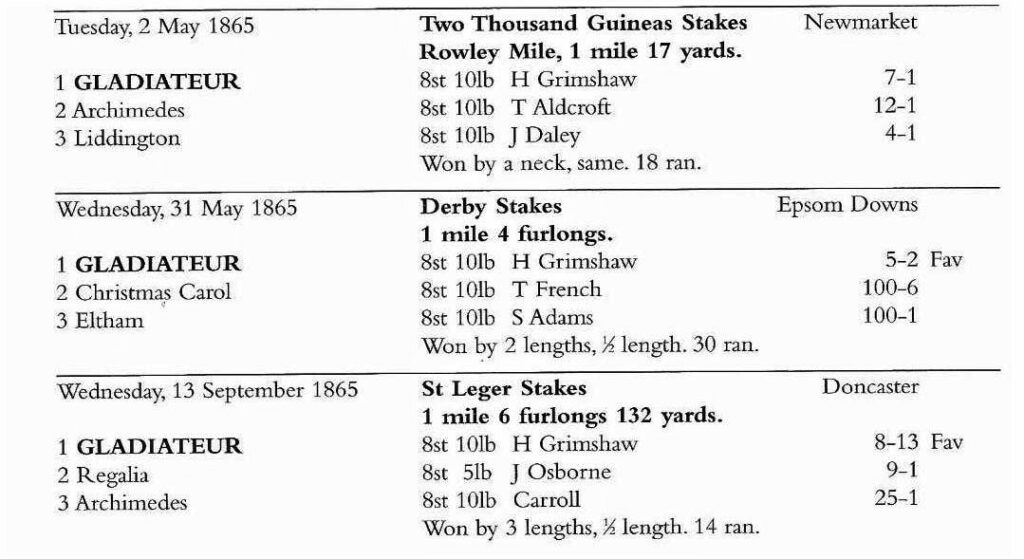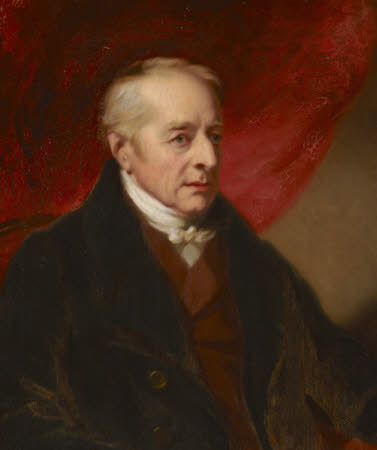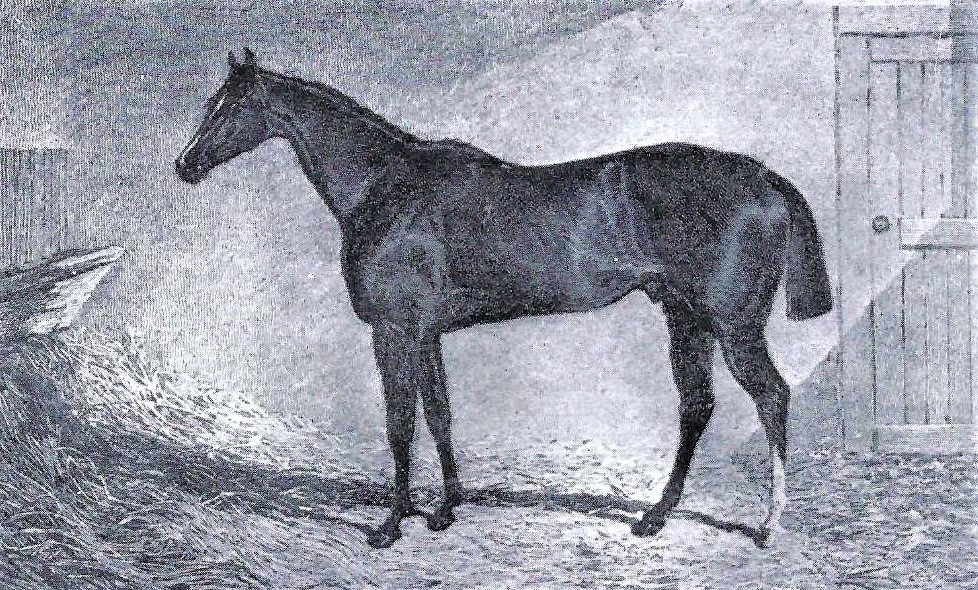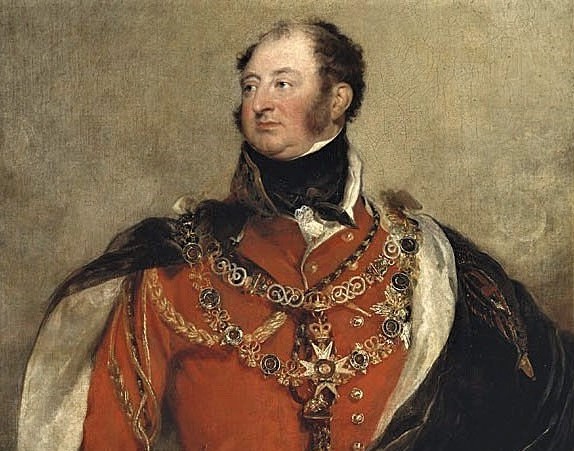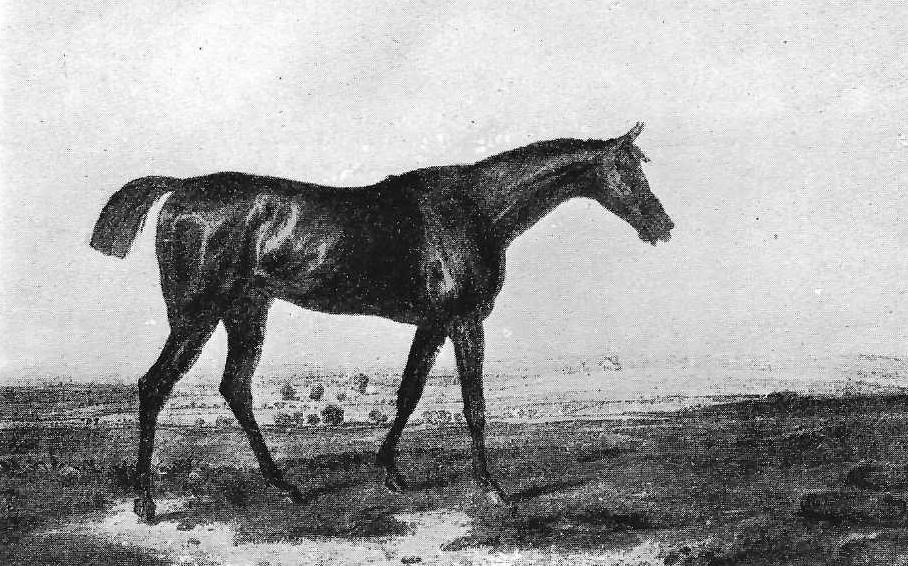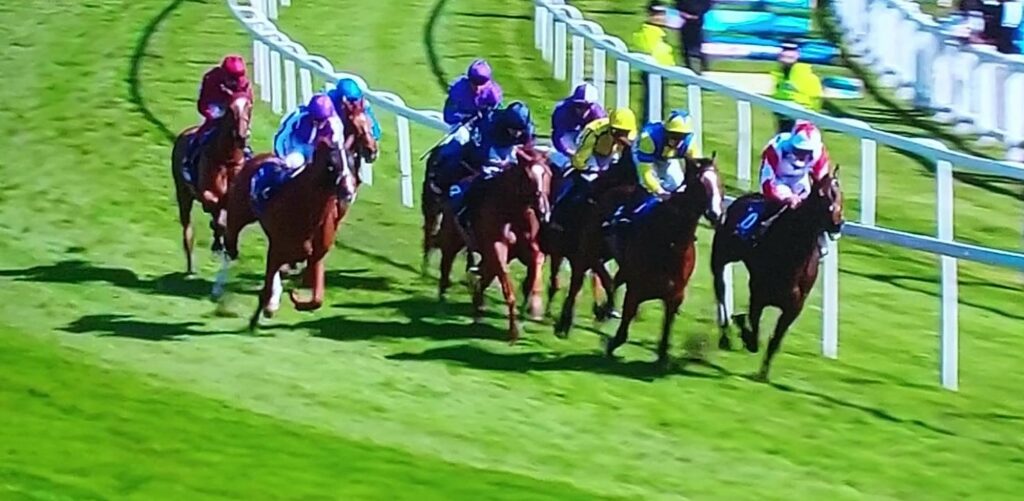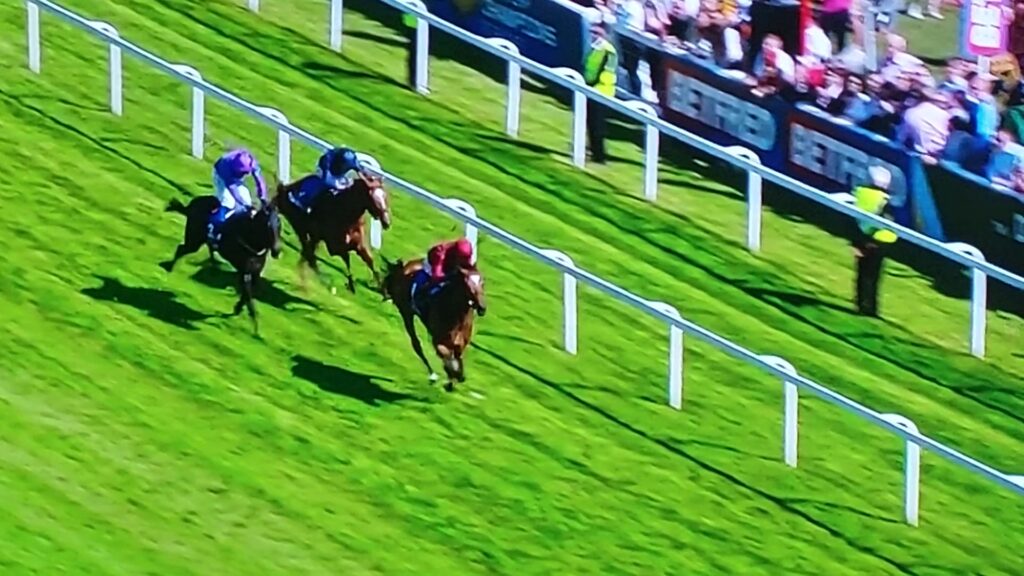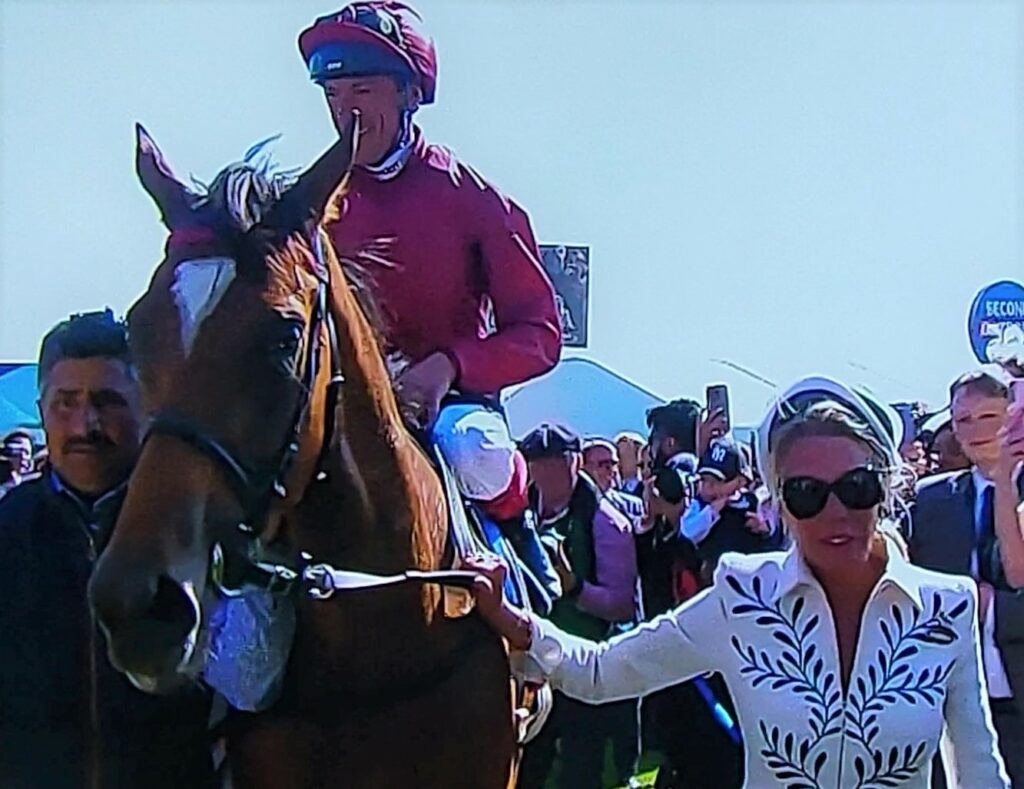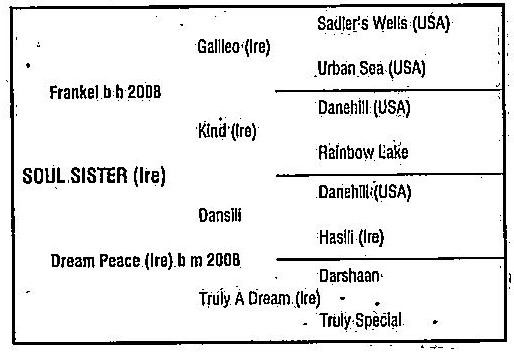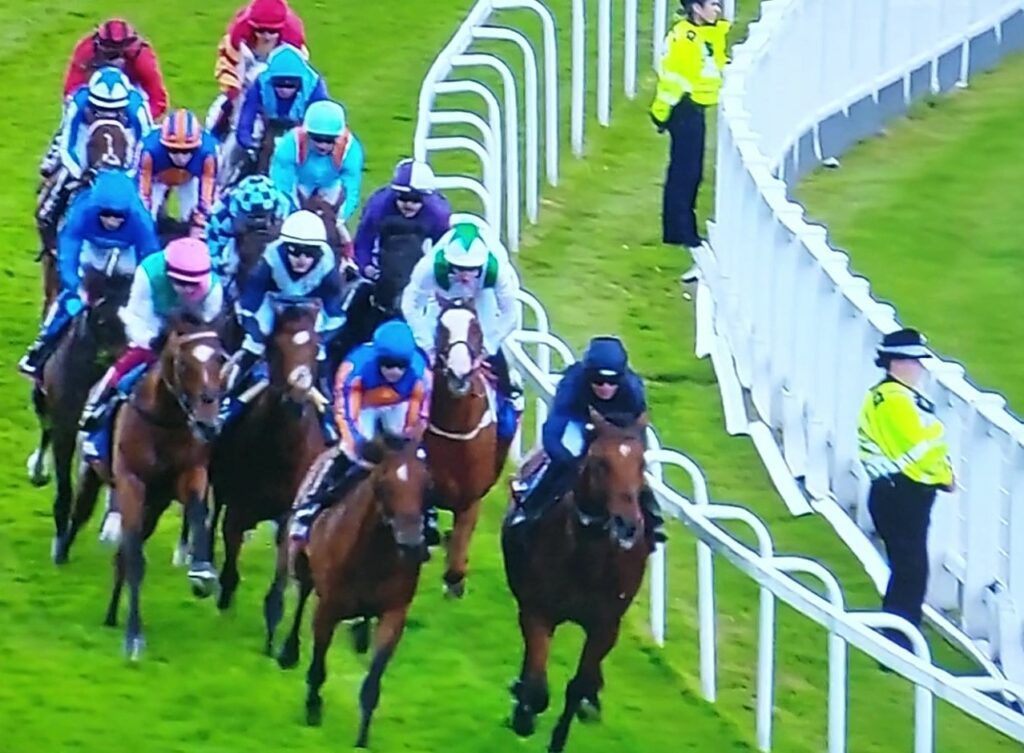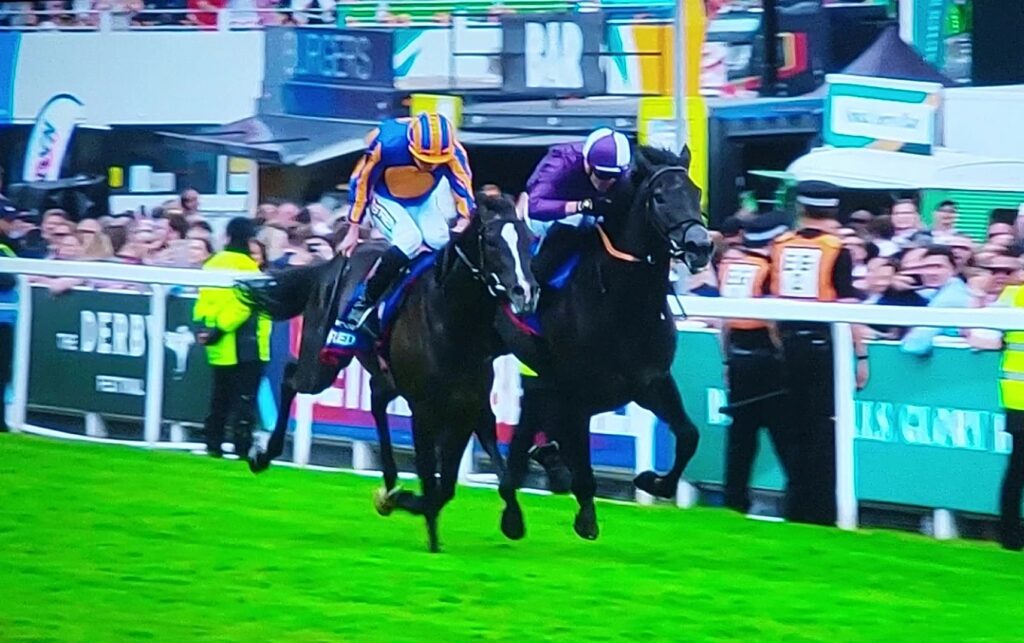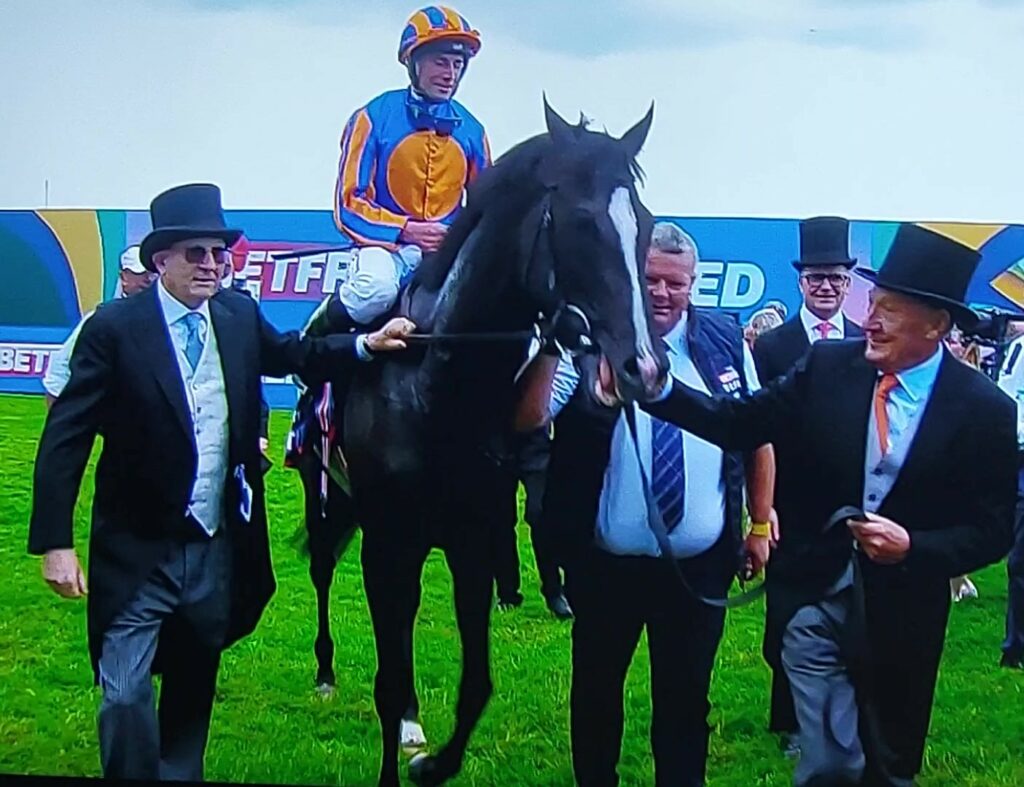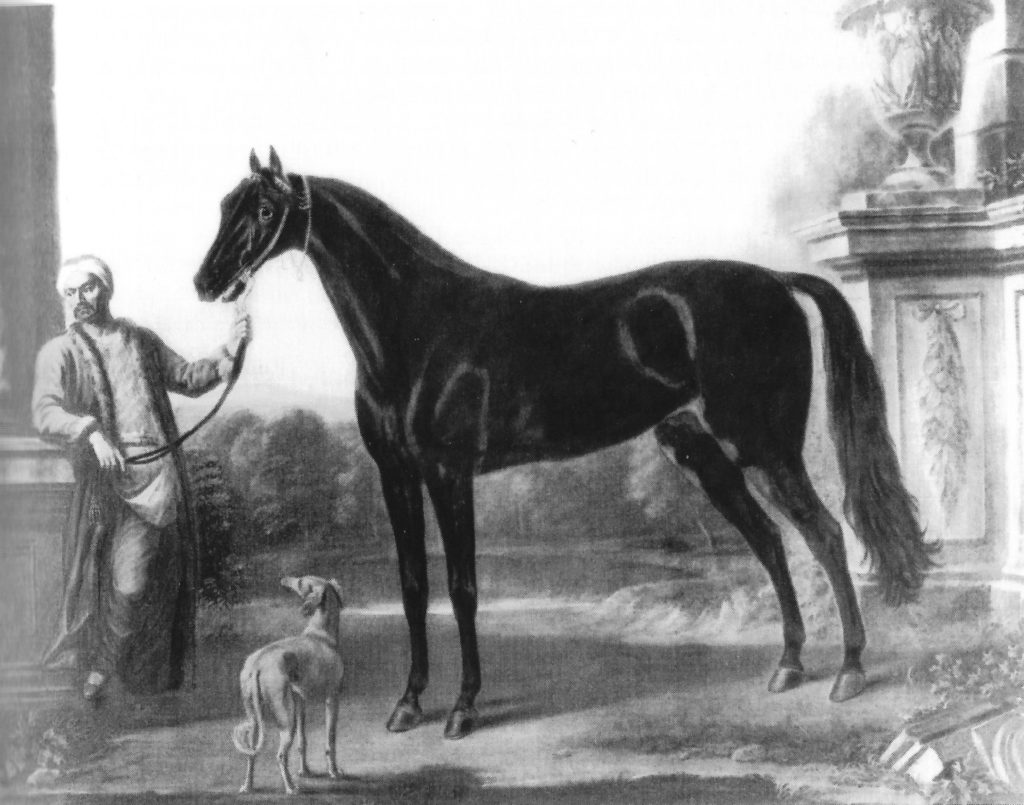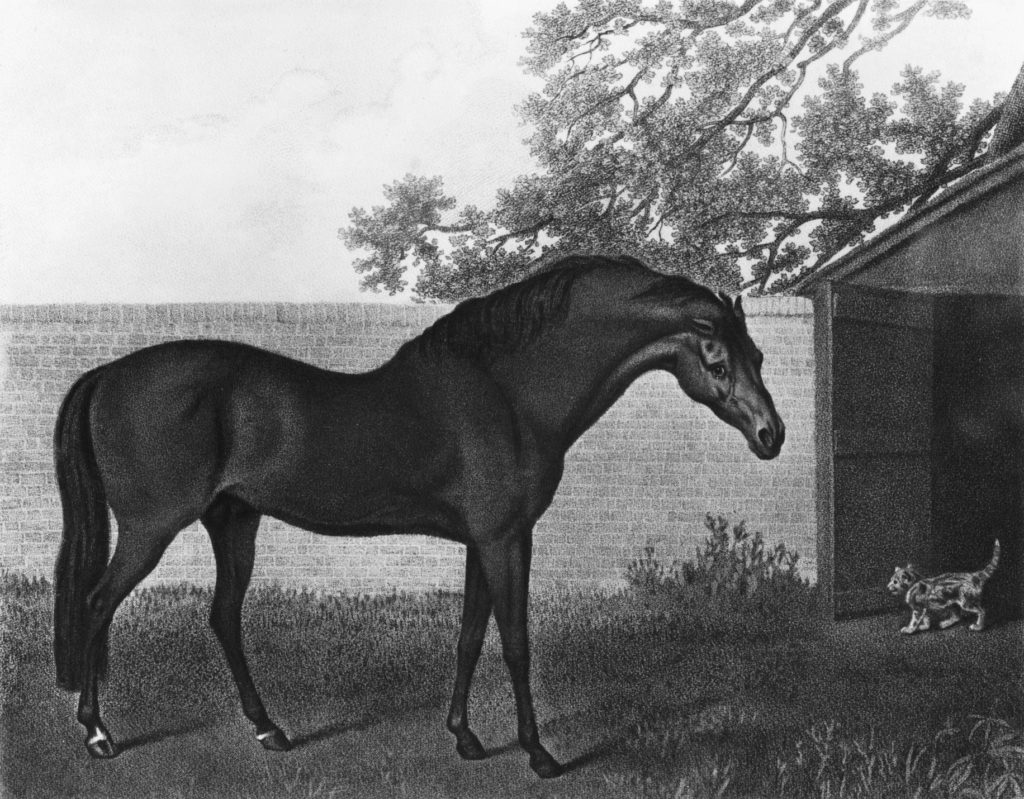THE DORLINGS OF EPSOM
William Dorling and his descendents governed the administration of Epsom Racecourse for the best part of two centuries.
The story begins with William (pictured below), born in Ipswich in 1776, then later moveing to Bexhill in Sussex to set up business there as a printer. Married to Lucy Welby, they had six children, the first, Henry in 1806, who, when old enough, was sent by William on a seven-year apprenticeship to a printer in London to learn the trade.
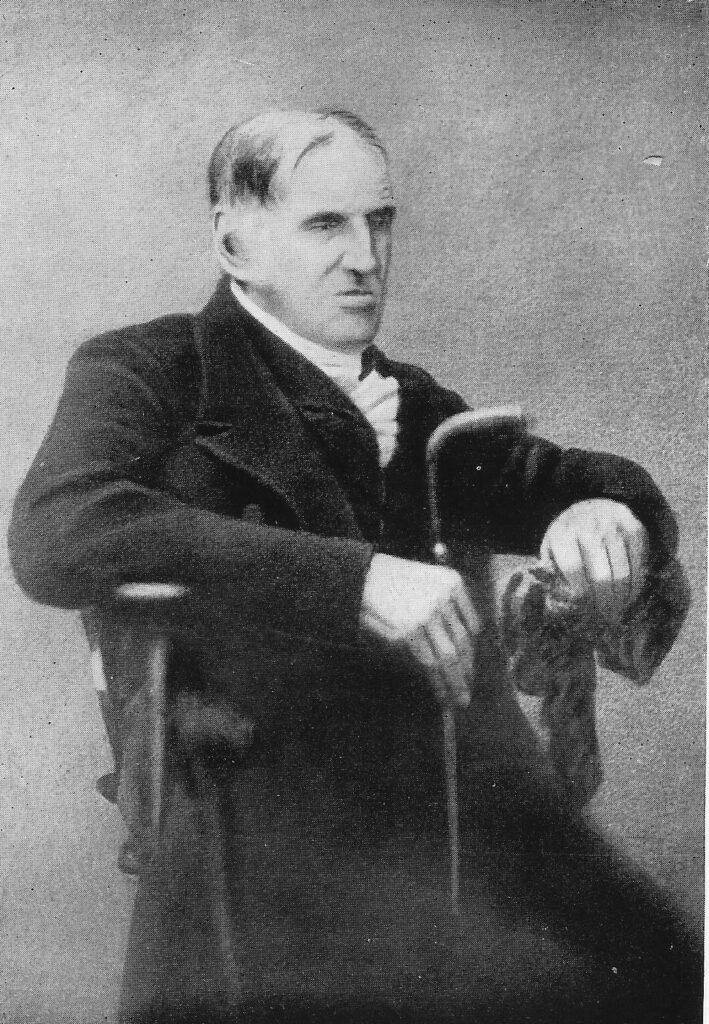 Around 1820, William moved his business to Epsom, where after printing almanacs and hymn books, he quickly, established himself as a bookseller in Epsom High Street, until famously, on Derby Day 1827, he produced Dorling’s Genuine Card List. This, the original racecard, gave details of the runners and their pedigrees, their owners, jockeys and colours together with the probable odds. It was an instant success with the racegoers.
Around 1820, William moved his business to Epsom, where after printing almanacs and hymn books, he quickly, established himself as a bookseller in Epsom High Street, until famously, on Derby Day 1827, he produced Dorling’s Genuine Card List. This, the original racecard, gave details of the runners and their pedigrees, their owners, jockeys and colours together with the probable odds. It was an instant success with the racegoers.
William’s involvement in the production of the Lists brought him into contact with racing’s grandees and both he and his son Henry attended the inaugural meeting of the Epsom Grandstand Association in 1830, where he bought shares in the organization.
Henry married his first wife Emily Clarke in September 1834. Emily, a proud and strong willed woman, had four children, the first, Henry Mayson in 1835, who inherited the traits of his mother. Tragically, five years later Emily died when only 29.
Meanwhile, Henry’s friend Benjamin Mayson, a linen merchant, had married Elizabeth Jurrum in April 1835 and set up home near Cheapside in the City of London. They also had four children, the first, Isabella, born on 12 March 1836, of whom we will hear more of later.
In 1839, Henry became the first Clerk of the Course at Epsom and later held that position at Brighton. Now, whereas the Dorling’s “Correct Card” had brought him in contact with jockeys and trainers, he now had the opportunity to meet owners. Notably, he made a friend of Lord George Bentinck, a partnership that held out hope to reform racing from the grip of the underworld.
At Gretna Green in March 1843, Henry married Elizabeth Mayson, the widow of his best friend Benjamin Mayson. Like his first wife, Elizabeth had a dominant and forceful personality, which came to the fore when the couple returned to Epsom to start their married life with eight children between them. Undeterred at the prospect, they augmented the family with 13 more. Throughout this time, conveniently, William was the Registrar of Births and Deaths in Epsom and Henry the Deputy Registrar.
The Preliminary Canter
In 1845, with the Epsom Grandstand running at a loss, Henry came up with two proposals which after support from Lord George Bentinck and negotiations with the Grand Stand Association Committee put the racecourse back on a sure footing.
The first, was that all races be saddled in front of the Grandstand, as at Ascot and Goodwood; this in consideration of adding £300 to the prize fund and making improvements to the lawn and accommodation in the Grandstand. Previously, saddling had taken place in ‘The Warren’, where the horses surrounded by well wishers often prevented the jockeys finding their mounts, so causing considerable delays. The move became an instant success, insuring a packed Grandstand of 5,000, in order to see what was popularly known as ‘The Preliminary Canter’.
In order to carry out the first, Henry Dorling’s second proposal was that he leased the Racecourse from the Association for 21 years at a rate of £1,000 per annum.
On the acceptance of his proposal he moved his family into the vast building.
The Grandstand, fitted out and redecorated for the visit of Queen Victoria in 1840, had numerous rooms and kitchens, enabling the family to live in comfort, although in winter it was often very draughty and cold. During the race meetings the children were conveniently packed off to enjoy the seaside at Brighton. In 1848, as Clerk of the Course, Henry laid out a new start to the Derby from Langley Bottom, now clearly visible from the Grandstand.
Always the entrepreneur, Henry, made the most of his lease, installing a new printing press in the basement of the Grandstand, to supply the shop in the High Street run by his father William and his sister Lucy, until William retired in 1851 and died in 1858.
On a more cheerful note, with so many children running about even the Grand Stand could be noisy at times, leading to Henry’s remark:
“For heaven’s sake Elizabeth, what is all that noise about?”
Elizabeth, his wife, famously replied.
“That Henry, is your children and my children fighting our children.”
In 1846 a new race was introduced, the “Great Metropolitan Handicap” or “The Publicans Derby” so called because at first the prize money was put up by the London publicans, many of whose pubs were used as betting shops. This was so successful that another race was introduced in 1851 called the “City and Suburban” with prize money coming from the public houses in the suburbs.
Throughout this time, the large family living in the Grandstand were assisted by Elizabeth’s oldest child, Isabella, who helped maintain the discipline among the younger family. A well educated young woman, she was an accomplished pianist and eventually moved to Heidelberg in Germany to study music and languages. It was whilst there, she learnt how to bake and make pastries, until returning to Epsom in 1854.
In 1856 she married Samuel Orchart Beeton, a wealthy publisher and began to write articles on cooking and household management for her husband’s publications. The first instalment of her famous Mrs Beeton’s Book of Household Management was published in 1861. It was an immediate success, selling over 60,000 copies in its first year of publication and nearly two million by 1868. Sadly, she died of a fever soon after giving birth to her fourth child when aged 28.
Returning to Henry, now playing up his prosperity in 1851, he moved his family from the Grandstand into Ormonde House, a substantial property at the eastern end of Epsom High Street able to accommodate his large family together with his lending library and printing business.
Coming to the end of 1866, Henry relinquished the lease on the Grandstand and became joint managing director of the EGSA with Francis Knowles. Then moving up again, took his family to a 12-acre mansion known as Stroud Green House in Croydon.
Sadly, Elizabeth died in her Croydon home in 1871, followed by Henry two years later. His mission accomplished, Henry’s persuasive manner and personal charm had now left the Grand Stand Association in a healthy financial position.
Following Henry’s death, his son Henry Mayson, succeeded his father as Clerk of the Course and later became Chairman and Joint Managing Director of the Course. Known as “The Dictator of Epsom Races” he was aware of what others thought of him, perversely
agreeing by saying: “Everyone hates me and I like it”
A gruff, but dedicated man, in 1919, on the day of his final Derby, he was up at 4 am distributing the Dorling’s ‘correct card’ that he had helped finished printing the night before.
In a sudden turn of events, on 29 September, when seriously ill, he travelled to Brighton to marry Blanche Maud Flear, 50 years his junior; a relationship he had kept secret for many years.
Henry died on 12 November, aged 84, at his home ‘The Birches’, Epsom and was buried with his late parents on 15 November 1919. His will, however, proved controversial, for although he left the printing office and some shares to his nephew, Edward Earle Dorling (1863-1943) and a good number of shares to the Dorling family, 97% of his wealth, amounting to almost £3 million today, went to Blanche.
Edward, who continued Henry Mayson’s work on the racecourse, was a priest of the Church of England and former Headmaster of the Cathedral School in Salisbury, was also an archaeologist, historian, and writer on heraldry, designing the arms for Girton College, Cambridge.
The popular press, of course, enjoyed a field day with headlines such as “Vicar to run Epsom Racecourse.” Edward, took over as General Manager of the Epsom Grand Stand Association in 1920, while the formidable, Charles Langlands, a prominent surveyor, became Clerk of the Course and in 1926, Chairman of the Epsom Grand Stand Association; his signature gracing the cover of the racecard until his retirement after the 1953 “Coronation Derby.”
At which point I find it appropriate to bring to an end the dynasty of the Dorlings – a family with the foresight and passion to leave the racing world a lasting legacy.
For more racing history see Michael’s Books for Sale.
